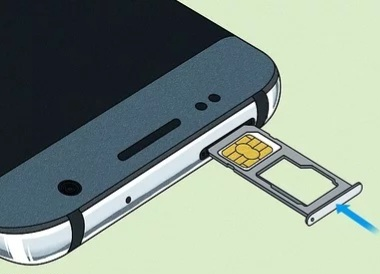A SIM Card
Mobile phones are personal to the user. They can contain contact data for close family, personal messages and useful applications. When you change this device, often times you need to carry over a SIM card to transfer this data and identity to a new device. SIM stands for Subscriber Identity Module. This small card needs to be inserted into a device in order to connect to a mobile network and allow you to communicate over mobile internet services. Information such as contact details can either be saved to the device itself or onto the SIM card. If you wish to transfer all your contact details to a new phone – or any other data – you need to make sure that these details are saved to the SIM in the settings and not just the phone’s internal storage.
Data transfer between a phone and SIM card involves communication between the device’s computer and the card’s chip. When you click a button with a message such as ‘save to SIM card’, the phone changes the chosen data into a SIM-accessible format. The phone’s operating system sends a signal to the device, commanding it to receive and store the data. When the action has been performed, the SIM card sends a return signal to confirm the process and a confirmation message appears on the screen for the user. The metal part of the SIM card connects to the phone’s electrical circuits, and data is transferred through electrical signals.
For new and the latest phones, there is no need to insert a SIM card for the phone to learn its identity. Instead of a chip that you need to physically remove and insert, SIM cards are now being built into devices as reprogrammable chips. Embedded SIM cards (eSIMs) are built into the device’s motherboard. Changing user’s service plan using an eSIM card involves changing data settings in user’s device’s settings instead.
eSIMs are programmed remotely and a user’s data profile can be transferred wirelessly. For smart device manufacturers, this method takes up less space and enables them to produce sleeker devices. The saved space can be used to optimise other components. SIM cards have shrunk in size over the years, from a mini SIM to micro SIM down to a nano SIM and eSIM.
SIM cards can be used in phones, tablets, laptops, smartwatches, cameras and GPS devices.
How does this tiny smartcard store data?
Clock: This pin synchronises time data between the device and the SIM card so that data is read with correct timing.
Reset: When the device sends a reset signal, this section resets the SIM card to remove any errors or refresh the data.
VCC: This is the power supply pin, which controls the voltage provided to the SIM.
GND: Also known as the ground pin, this section completes the electrical circuit and returns an electric current to the power source.
VPP: The programming voltage pin isn’t always required in modern cards. Its function is to increase the voltage for programming so that memory cells can store data.
I/O: The input/output pin sends commands between a device and its SIM.







